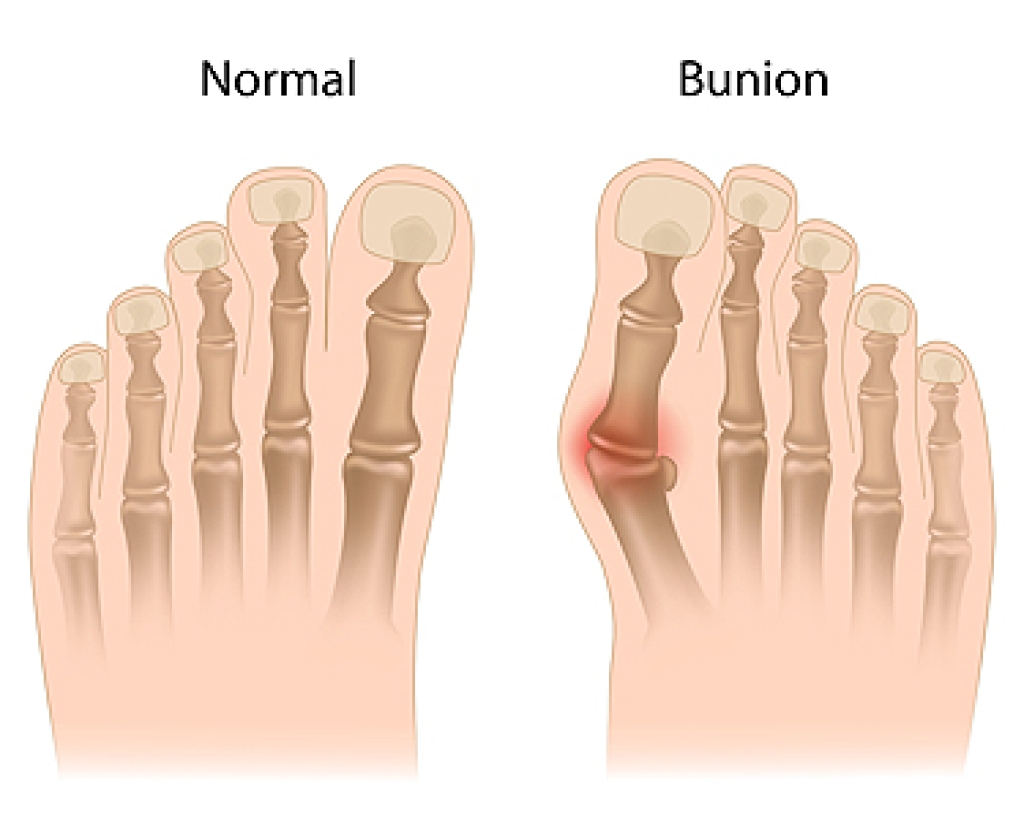
A bunion is a progressive foot deformity that develops when the joint at the base of the big toe shifts out of proper alignment, causing the toe to angle inward. Common causes include joint problems, poorly fitting shoes, and inherited foot structure influenced by genetics. Over time, uneven pressure on the joint leads to inflammation and structural changes. Symptoms often include a visible bump, redness, swelling, stiffness, and pain that worsens with walking or prolonged standing. As the condition progresses, normal movement of the foot may become limited. A podiatrist can evaluate joint alignment, identify contributing factors, and create a personalized treatment plan. Care may include footwear guidance, orthotics, padding, or advanced treatment options to relieve discomfort and slow progression. If you have the beginning signs of a bunion developing, it is suggested that you consult a podiatrist who can offer you effective management tips.
If you are suffering from bunion pain, contact Katie Besselman, DPM of Advanced Podiatry. Our doctor can provide the care you need to keep you pain-free and on your feet.
What Is a Bunion?
Bunions are painful bony bumps that usually develop on the inside of the foot at the joint of the big toe. As the deformity increases over time, it may become painful to walk and wear shoes. Women are more likely to exacerbate existing bunions since they often wear tight, narrow shoes that shift their toes together. Bunion pain can be relieved by wearing wider shoes with enough room for the toes.
Causes
- Genetics – some people inherit feet that are more prone to bunion development
- Inflammatory Conditions - rheumatoid arthritis and polio may cause bunion development
Symptoms
- Redness and inflammation
- Pain and tenderness
- Callus or corns on the bump
- Restricted motion in the big toe
In order to diagnose your bunion, your podiatrist may ask about your medical history, symptoms, and general health. Your doctor might also order an x-ray to take a closer look at your feet. Nonsurgical treatment options include orthotics, padding, icing, changes in footwear, and medication. If nonsurgical treatments don’t alleviate your bunion pain, surgery may be necessary.
If you have any questions, please feel free to contact our office located in Saint Peters, MO . We offer the newest diagnostic and treatment technologies for all your foot care needs.







